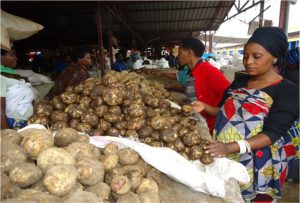Youth Hold the Key to the Future of Global Food Systems, New FAO Report Finds

1.3 billion young people face rising food insecurity, unemployment, and climate shocks—but hold the key to future food systems
A new report from the Food and Agriculture Organization of the United Nations (FAO) reveals that 1.3 billion young people aged 15 to 24 are central to transforming global agrifood systems—yet they face rising food insecurity, unemployment, and climate-related challenges.
Titled “The Status of Youth in Agrifood Systems,” the report highlights that nearly 85 percent of global youth live in low- and lower-middle-income countries, where agriculture plays a vital role in livelihoods. Despite this, food insecurity among youth has grown from 16.7 percent to 24.4 percent between 2014 and 2023, with the worst impacts seen in Africa.
Currently, 44 percent of working youth are employed in agrifood systems, but the rate varies widely—from 82 percent in countries with protracted crises to just 23 percent in industrialized nations. Meanwhile, over 20 percent of youth globally are not in employment, education, or training (NEET), and young women are twice as likely to fall into this category. According to FAO estimates, solving youth unemployment could add $1.5 trillion to the global economy, with nearly half of that growth driven by agriculture and food systems.
The report stresses that young people are not just vulnerable—they are key to driving innovation and sustainability in food systems. As the current agricultural workforce ages, youth will need to step in as the next generation of producers, processors, and service providers.
Climate change poses another major threat, particularly for rural youth. Around 395 million young people live in areas expected to experience severe declines in agricultural productivity, especially in sub-Saharan Africa. At the same time, many youth are migrating from rural to urban areas or abroad due to limited opportunities, leading to labor shortages in the sector.
To address these challenges, the FAO outlines a strategy focused on three pillars: increasing knowledge and data on youth in agriculture, amplifying youth voices in policymaking, and investing in targeted programs that create decent work opportunities. The report also calls for increased access to land, credit, training, and digital technologies for young people, alongside stronger social protection systems.
Infrastructure modernization, such as better roads, irrigation, and storage, is also crucial to make agriculture more attractive. Additionally, the FAO recommends creating safer and more responsive migration pathways for youth to move where their skills are most needed.
With youth populations in sub-Saharan Africa expected to grow by 65 percent by 2050, the report warns that the time to act is now. Empowering youth in agrifood systems is not only essential to combat hunger and unemployment—it is a cornerstone of sustainable development and climate resilience.

SUBSCRIBE TO OUR NEWSLETTER



















